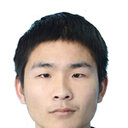Treatment with EGCG in NSCLC leads to decreasing interstitial fluid pressure and hypoxia to improve chemotherapy efficacy through rebalance of Ang-1 and Ang-2.
キーワード
概要
OBJECTIVE
Microvasculature and microenvironment play important roles in proliferation, invasion, metastasis and prognosis in non-small cell lung cancer (NSCLC), which might be altered by many anti-angiogenic drugs. Epigallocatechin-3-gallate (EGCG), a natural anti-angiogenesis agent refined from green tea, was defined to have multiple effects on angiogenesis factors, such as endothelial growth factor (VEGF), platelet-derived growth factor (PDGF) and angiopoietins (ANGs). Hypothesizing that EGCG might regulate microvasculature and microenvironment in NSCLC, the effects of EGCG on microvessel density (MVD), expression of Ang-1 and Ang-2, interstitial fluid pressure (IFP), tumor hypoxia, and chemotherapy sensitivity were examined.
RESULTS
EGCG treatment of A549 cells in mice bearing xenografts in vivo led to a significant decrease of MVD detected by CD31, and of Ang-2 expression detected by quantum dots double-label immunofluorescence assessment, while Ang-1 decreased with no significance. Decreased IFP was measured by the Wink-in-needle method, while hypoxia was assessed by polarographic electrode and pimonidazole (PIMO) immunohistochemistry. Assuming that these changes would increase response to chemotherapy, tumor growth studies were p[erformed in nude mice with xenografts, which were then treated with EGCG and the chemotherapeutic agent cisplatin. EGCG therapy combined with cisplatin led to synergistic inhibition of tumor growth, compared with administration of each treatment separately (P < 0.001). According to linear regression analysis, IFP was positively correlated with PIMO staining (R(2) = 0.618, P = 0.002), Ang-2 was correlated with MVD (R(2) = 0.423, P = 0.022), IFP (R(2) = 0.663, P = 0.01) and PIMO staining (R(2) = 0.694, P = 0.01).
CONCLUSIONS
IFP and delivery of oxygen might be improved by rebalance of Ang-1/Ang-2 under the treatment of EGCG in NSCLC, which also acts as a sensitizer of chemotherapy. These studies established a new mechanism for using EGCG as an adjuvant chemotherapy agent through modifying microvasculature and microenvironment.


